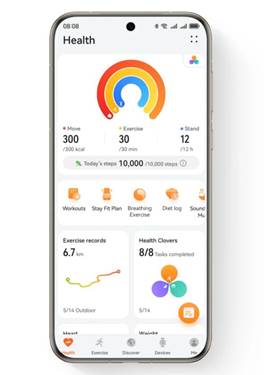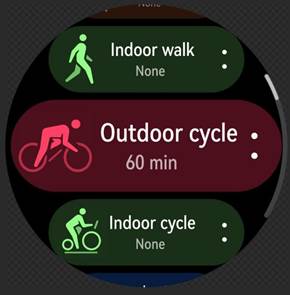How to Track Steps Effectively With Your Smartwatch
Walking
is one of the simplest and most effective ways to improve overall health, and
step tracking has made it easier for people to stay motivated. A smartwatch can
turn daily movement into measurable progress, reminding you to stay active even
on busy days. Many people use step counts to reach personal fitness goals, such
as 10,000 steps a day, or simply to ensure they are not sitting too long. By
monitoring these small actions, you gain a clearer picture of your lifestyle
and can make healthier choices. Smartwatches act as silent partners,
encouraging balance between rest and activity. In this article, we will explore
how to make your smartwatch step counter as accurate and useful as possible.

Setting Up Your Smartwatch for Accurate Step Counting
Proper Wearable Placement and Fit for Best Results
The
accuracy of step tracking often depends on how you wear the smartwatch. A watch
that is too loose may slide up and down your wrist, causing the sensors to
misinterpret arm movements as extra steps. On the other hand, a watch that is
uncomfortably tight may not detect movement smoothly. The best placement is
just above the wrist bone, snug but not restrictive, so the watch can pick up
natural arm swings while walking. Consistency also matters: wearing the watch
in the same position each day helps produce more reliable results. Some people
switch wrists, but it is best to choose one wrist and stick with it for
consistency in tracking. By ensuring a proper fit, you give your smartwatch the
best chance of recording steps accurately throughout the day.
Calibrating Your Device for Improved Accuracy
Calibration
is another important step that many users overlook. Smartwatches typically
estimate stride length based on height, but individuals walk differently
depending on body type, speed, and environment. Manually adjusting stride
length in your settings can greatly improve accuracy. For example, you can
measure how many steps it takes to walk a known distance, such as 100 meters,
and use that information to refine the watch’s calculation. Over time, this
adjustment means the device will match your actual steps more closely, avoiding
undercounting or overcounting. It may take a few tries to get calibration just
right, but the effort pays off in more dependable results. By investing a few
minutes to fine-tune these settings, you ensure your daily step totals are
trustworthy.

Maximizing Step Tracking Accuracy Throughout Your Day
Understanding How Different Activities Affect Step
Counts
Smartwatches
use motion sensors to detect steps, which means certain activities can confuse
the system. For instance, pushing a stroller or shopping cart may reduce
detected steps since your arms remain still. Similarly, typing on a computer or
washing dishes may sometimes add false steps due to repetitive wrist movement.
Being aware of these limitations helps you interpret your data more
realistically. If you rely on step counts as part of a health plan, remember
that some activities still provide physical benefits even if the watch
undercounts them. You can balance this by paying attention to total activity
levels, such as calories burned or active minutes, which give a fuller picture
of your efforts. The goal is not perfection but a meaningful trend that
motivates you to stay active.
Using Companion Apps to Monitor and Analyze Your
Progress
Step
tracking becomes more powerful when combined with companion apps that display
your progress over time. These apps can show daily, weekly, or monthly trends,
helping you see whether you are meeting goals consistently. They also let you
set personalized reminders, such as prompts to move after sitting for too long.
For people who enjoy motivation through numbers, these charts and insights can
make step tracking more engaging. Some apps even suggest small lifestyle
changes, like taking the stairs more often, based on your patterns. Beyond
numbers, having a record of your activity encourages accountability—you can
look back at your data and celebrate achievements or adjust habits when needed.
Common Step Tracking Mistakes and How to Fix Them
Many
users encounter similar issues that affect the accuracy of step counts, but
these can often be corrected with simple adjustments. One common mistake is
forgetting to wear the watch consistently, which leads to gaps in data and
makes trends less reliable. Another issue arises from wearing the watch too
loosely, which causes miscounts. Some people also rely solely on daily step
totals without considering context, such as different activity levels on
weekends versus weekdays. To improve accuracy, make sure your watch is properly
fitted, calibrated, and worn every day. Regularly syncing with your companion
app helps maintain accurate records as well. By being mindful of these simple
factors, you can avoid frustration and trust your smartwatch as a dependable
fitness tool. Over time, these corrections create a more realistic view of your
activity and progress.
Conclusion
Tracking steps with a smartwatch can transform daily movement into a meaningful part of your wellness routine. By focusing on proper fit, calibration, and realistic interpretation of your data, you can ensure that the numbers you see truly reflect your lifestyle. Using companion apps adds extra value, helping you stay motivated and consistent. For those who care about both reliability and style, the Huawei watch gt6 offers accurate step counting that provides more trustworthy data, along with a beautifully designed look that doubles as a fashionable daily accessory. With the right watch and habits, you can step forward with confidence toward better health.


